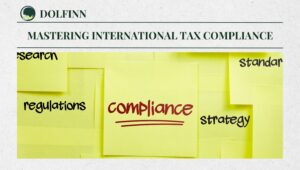
Current Expected Credit Loss (CECL) model
The Current Expected Credit Loss CECL model, established under the Financial Accounting Standards Board’s FASB Standards Update (ASU) 2016-13, marks a pivotal shift in credit impairment recognition. Designed to address the shortcomings of the incurred loss model, CECL adopts an expected loss framework, enhancing financial transparency and timeliness. Since its inception, FASB has refined the model through subsequent amendments to ensure relevance and adaptability.
This guide explores the core principles of CECL, its far-reaching impact across industries, and practical steps for adoption. Whether you’re part of a financial institution or a nonbank entity, understanding CECL is essential for accurate and compliant credit loss accounting.
What Is the CECL Model?
The CECL model replaces the delayed recognition inherent in the incurred loss approach with a proactive risk management methodology. Its key objectives include:
- Unified Framework: CECL consolidates credit impairment models, creating a more streamlined approach.
- Proactive Loss Recognition: Entities account for lifetime credit losses upfront, reducing surprises during economic downturns.
- Flexible Implementation: CECL allows entities to select methods best suited to their asset profiles and operational needs.
Unlike its predecessor, CECL encompasses a broad range of financial instruments, including loans, trade receivables, lease receivables, and held-to-maturity (HTM) debt securities. This ensures a consistent approach across industries and asset types.
CECL’s Broader Impact
Initially perceived as a framework for banks and credit unions, CECL extends its reach to nonbank entities holding financial assets subject to credit risk. Examples include:
- Retail Companies: Trade receivables from credit sales are subject to CECL.
- Real Estate Firms: Lease receivables must consider expected losses over their contractual life.
- Insurance Companies: Policy loans and other receivables fall under CECL’s purview.
To ensure compliance, nonbank entities should:
- Inventory Financial Assets: Identify which instruments are subject to CECL.
- Evaluate Existing Models: Compare current practices against CECL standards.
- Collaborate Across Teams: Engage finance, risk, and IT departments for seamless adoption.
Proactively addressing CECL’s requirements minimizes disruptions and aligns businesses with evolving accounting standards.
Key Updates Under CECL
Simplifying Credit Impairment Models
One of CECL’s primary objectives is reducing the complexity of impairment models. It introduces a unified framework for most assets but exempts certain categories:
- Available-for-Sale (AFS) Debt Securities: These remain under ASC 320, focusing on fair value rather than expected losses.
- Trading Securities: As these are measured at fair value, they are excluded from impairment accounting.
This distinction helps entities apply appropriate standards while streamlining processes for eligible assets.
The Shift to Expected Loss Recognition
CECL mandates recognizing lifetime expected credit losses at the time of asset origination. By contrast, the incurred loss model only recognized losses when a triggering event occurred. This shift ensures:
- Proactive Risk Management: Entities can anticipate and mitigate credit risks earlier.
- Improved Accuracy: Financial statements reflect true asset values under various economic conditions.
For example, a bank issuing a 5-year loan must estimate and record expected credit losses over the entire loan period, considering historical trends and future forecasts.
Comprehensive Data Integration
CECL encourages a holistic approach to credit loss accounting estimation by incorporating:
- Historical Data: Past performance trends provide a baseline.
- Current Conditions: Real-time data ensures relevancy.
- Reasonable Forecasts: Predictive analytics help estimate future risks.
Entities unable to reliably forecast beyond a specific period must revert to historical data, balancing precision and feasibility.
Flexible Estimation Methods
CECL model adaptability is one of its strengths. Entities can choose from several estimation techniques, including:
- Discounted Cash Flow (DCF): By comparing amortized cost with the present value of projected cash flows, this method captures nuanced credit risks.
- Loss-Rate Analysis: Commonly used for homogenous asset pools, such as credit card receivables.
- Probability-of-Default (PD) Analysis: Suited for complex portfolios, this method integrates default likelihood and loss severity.
- Aging Schedules: Ideal for receivables, this approach assesses risk based on payment delays.
Consistency in applying chosen methods is critical for reliable and comparable reporting. For example, a company using aging schedules for trade receivables should not abruptly switch to PD analysis without clear justification.
Recent Amendments to CECL
FASB continues to refine the CECL framework to address practical challenges:
- ASU 2022-02:
- Eliminates troubled debt restructuring (TDR) guidance, reducing redundancy.
- Introduces enhanced vintage disclosures, allowing stakeholders to analyze credit loss trends by origination year.
- Proposed ASU (June 2023):
- Expands the gross-up approach for purchased credit-deteriorated (PCD) assets.
- Streamlines classification, improving transparency and usability.
These updates demonstrate FASB’s commitment to maintaining a robust yet practical framework.
Practical Challenges and Solutions
Implementing CECL can be daunting. Entities often face challenges like:
- Data Limitations: Historical and forecast data may be incomplete or unreliable.
- Model Validation: Ensuring chosen methods align with asset characteristics.
- System Upgrades: Existing IT infrastructure may need enhancements to support CECL requirements.
To overcome these hurdles, businesses can:
- Invest in robust data management systems.
- Conduct pilot runs to validate models.
- Leverage external expertise for guidance on complex assets.
For instance, a mid-sized bank implemented CECL by integrating machine learning algorithms to improve forecast accuracy, resulting in smoother compliance and better risk management.
For more information you can refer:
- CECL 2023: Current and Expected Credit Loss for Non-Financial Institutions (BMF – CPA)
- 10 Practical Considerations for CECL Implementation (Brown Edwards)
- Current Expected Credit Loss (CECL) Implementation Insights (Deloitte)
- CECL Regulation – Best Practices for Effective Implementation (Acquity Knowledge Partners)
- Uncovering Hidden Embedded Leases: 7 Best Practices for ASC 842 Compliance (Dolfinn)
Conclusion
The CECL model represents a significant advancement in credit loss accounting, fostering greater transparency and resilience in financial reporting. Its proactive, flexible, and comprehensive approach ensures entities are better equipped to navigate economic uncertainties.
For organizations across industries, understanding CECL’s nuances and leveraging its flexible methodologies is key to successful adoption. As FASB continues to refine the framework, staying informed will help entities maintain compliance and deliver robust financial statements.
Whether you’re a financial institution or a nonbank entity, embracing CECL is not just about compliance—it’s an opportunity to enhance risk management and build stakeholder trust in an evolving financial landscape.
FAQs
1. Why was the CECL model introduced?
CECL addresses delays in credit loss recognition under the incurred loss model, providing a more timely and accurate reflection of credit risk.
2. Who needs to comply with CECL?
Entities holding financial instruments subject to credit risk, such as loans and trade receivables, must comply. This includes banks, retail companies, and real estate firms.
3. Are specific estimation methods required?
No. CECL allows flexibility in choosing methods that align with an entity’s asset portfolio and risk profile.
4. How does CECL differ from the incurred loss model?
CECL records lifetime expected losses upfront, eliminating recognition thresholds and reactive approaches.
5. What are the latest CECL updates?
Recent updates include ASU 2022-02, which simplifies guidance, and proposed changes to enhance PCD asset classifications.
Summary
The CECL model is revolutionizing credit loss accounting by replacing outdated methodologies with a forward-looking approach. This guide dives into CECL’s key principles, its impact across industries, and actionable steps to adopt this groundbreaking framework for better financial transparency and resilience.
Latest Posts
- Top Cash Flow Forecasting Tools You Can’t Ignore for Global Businesses

- Mastering Profit vs. Cash Flow: 5 Key Strategies for Financial Success

- 5 Key Advantages and Disadvantages of Outsourced Accounting: Is Outsourced Accounting Worth the Risk?

- Mastering Cash Flow Management in 2025: 7 Proven Strategies for Financial Success

- Mastering International Tax Compliance: 7 Crucial Strategies for Multinational Success

- 5 Common Bookkeeping Mistakes Small Businesses Make and How to Avoid Them

